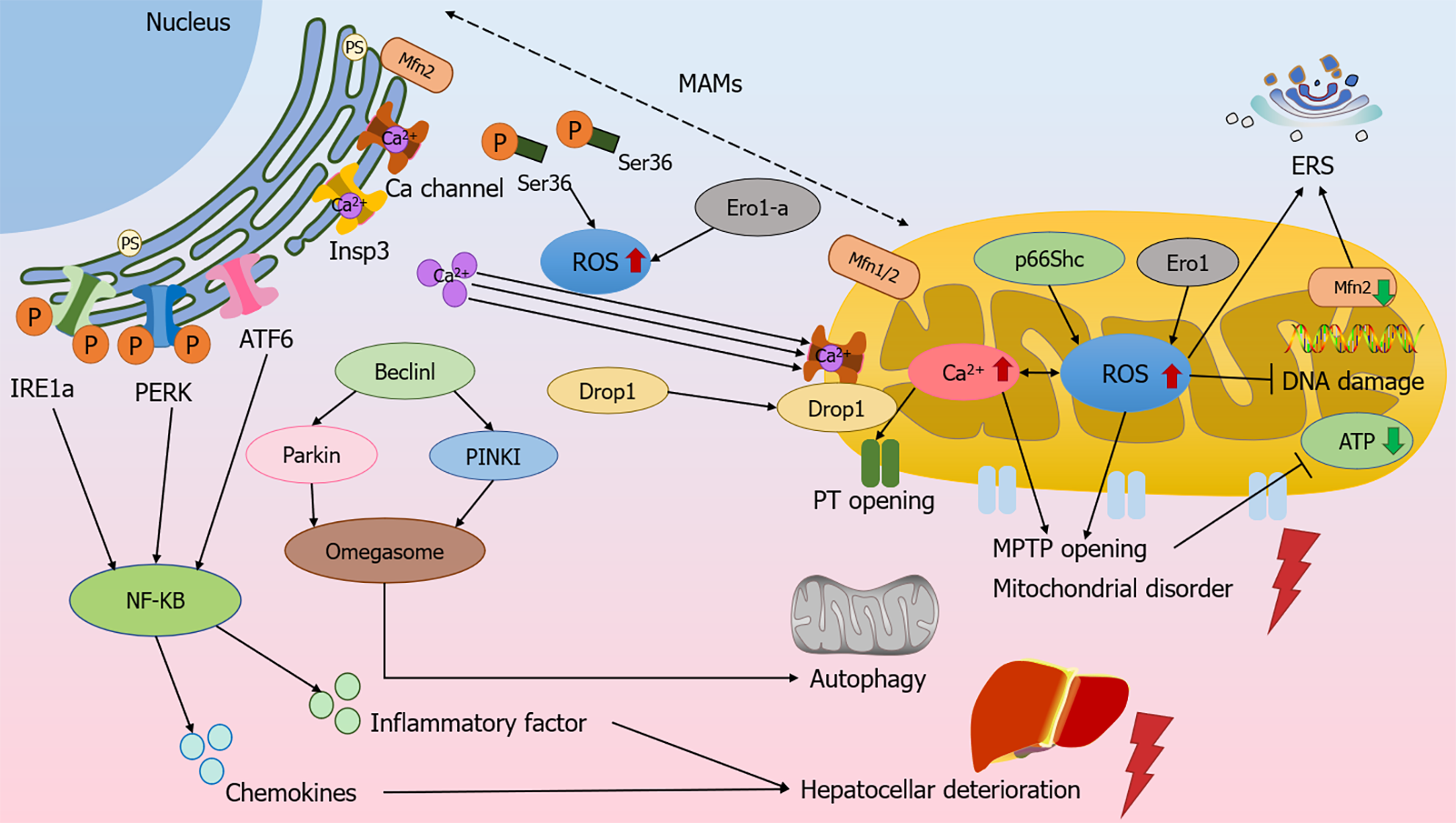Copyright
©The Author(s) 2024.
World J Hepatol. Apr 27, 2024; 16(4): 494-505
Published online Apr 27, 2024. doi: 10.4254/wjh.v16.i4.494
Published online Apr 27, 2024. doi: 10.4254/wjh.v16.i4.494
Figure 3 Mitochondrial and endoplasmic reticulum-associated signaling regulates the molecular mechanism of chronic liver disease.
Reactive oxygen species (ROS) in the endoplasmic reticulum (ER) initiates Ca2+ efflux from Insp3 and Ca ion channels, and the Ser36 site is dephosphorylated and can be transferred to mitochondria-associated ER membranes (MAMs) to mediate ROS production. ROS promotes Ca2+ in the ER to flow to the mitochondria through the MAMs and increases mitochondrial ROS production, and conversely, the increase in ROS affects Ca2+ and initiates the opening of permeability transition pores, and the swelling of the mitochondria causes the rupture of the outer membrane, which can lead to oxidative damage to DNA and cause adenosine triphosphate depletion. Beclinl and PINK1/Parkin mediate mitochondrial autophagy, and together with PINKI, promote an increase in MAMs and omegasome formation. Excessive accumulation of ROS leads to endoplasmic reticulum stress, activation of the ATF6, IRE1, and PERK, the three unfolded protein response pathways, and the up-regulation of NF-κB activity, promoting the secretion of hepatocyte inflammatory factors and chemokines, leading to functional deterioration of hepatocytes. MAMs: Mitochondria-associated ER membranes; ERS: Endoplasmic reticulum stress; ATP: Adenosine triphosphate.
- Citation: Zheng Y, Zheng YH, Wang JH, Zhao TJ, Wang L, Liang TJ. Progress of mitochondrial and endoplasmic reticulum-associated signaling and its regulation of chronic liver disease by Chinese medicine. World J Hepatol 2024; 16(4): 494-505
- URL: https://www.wjgnet.com/1948-5182/full/v16/i4/494.htm
- DOI: https://dx.doi.org/10.4254/wjh.v16.i4.494









